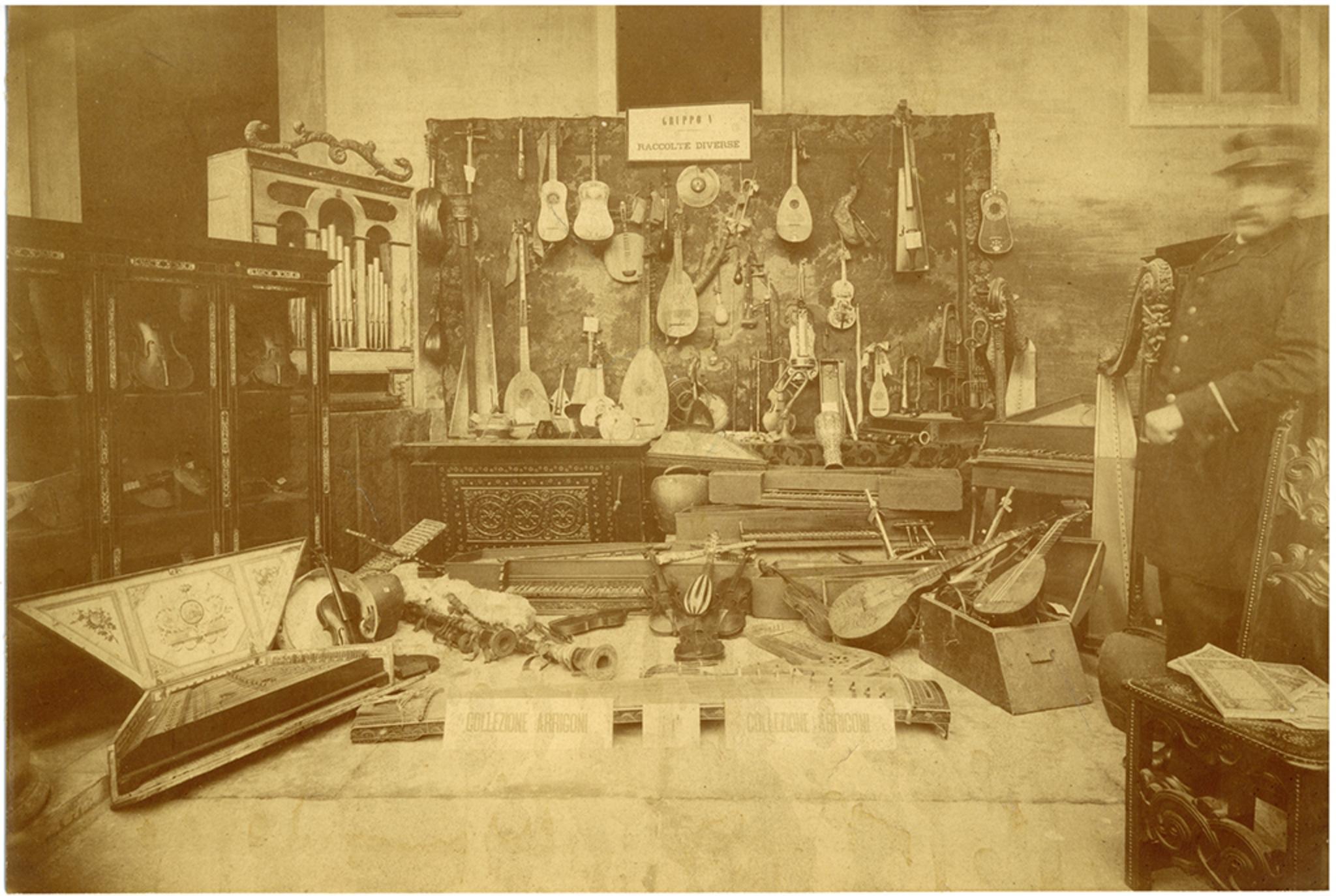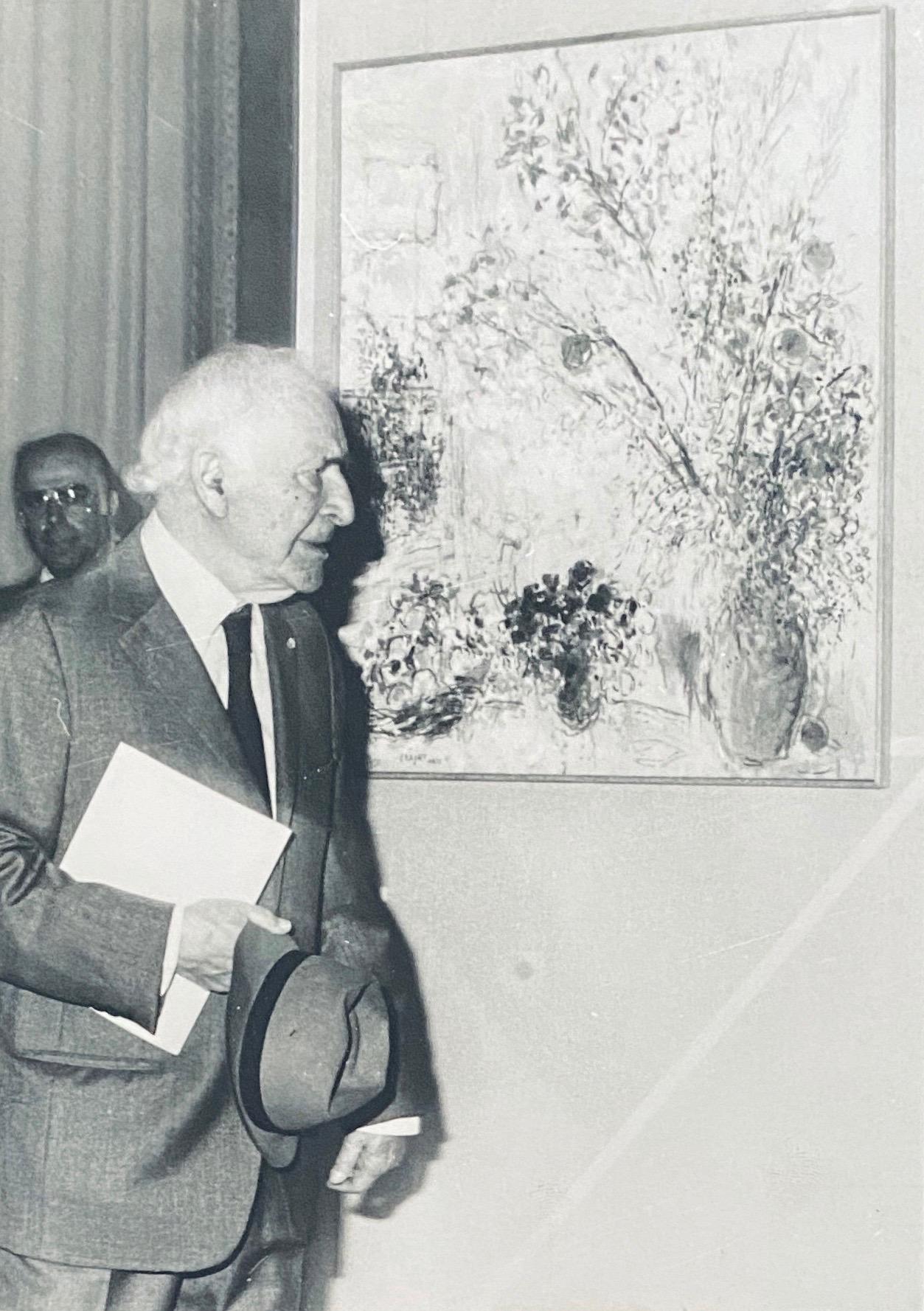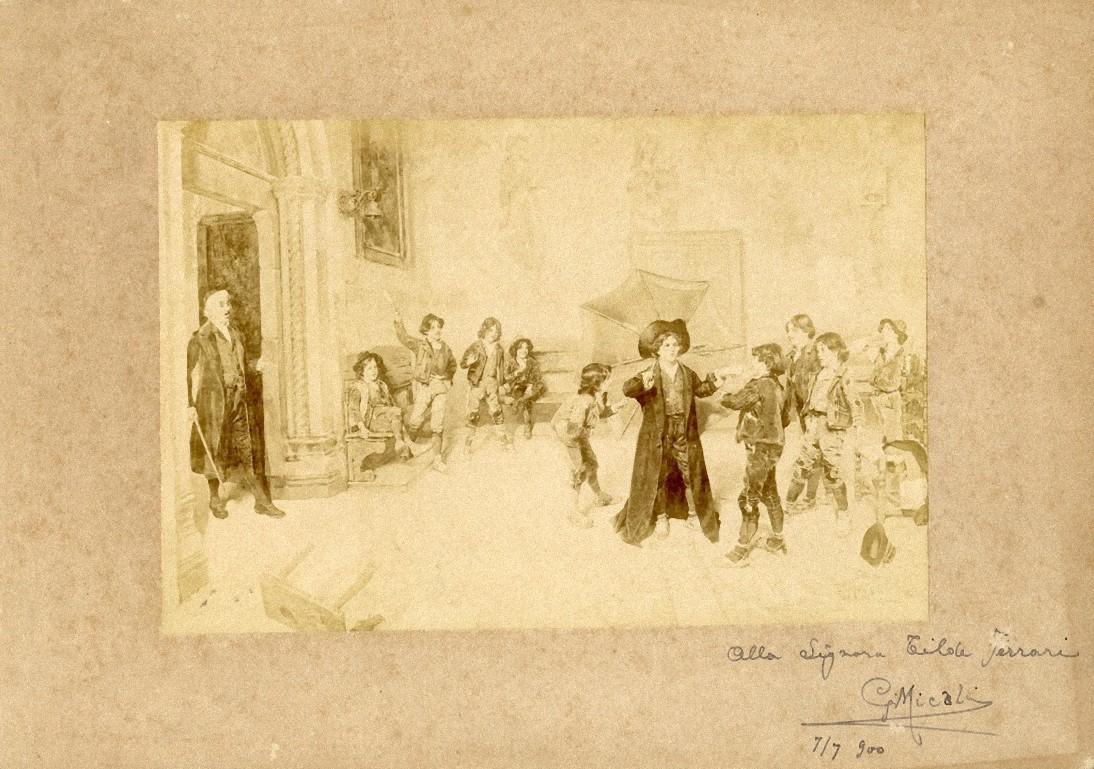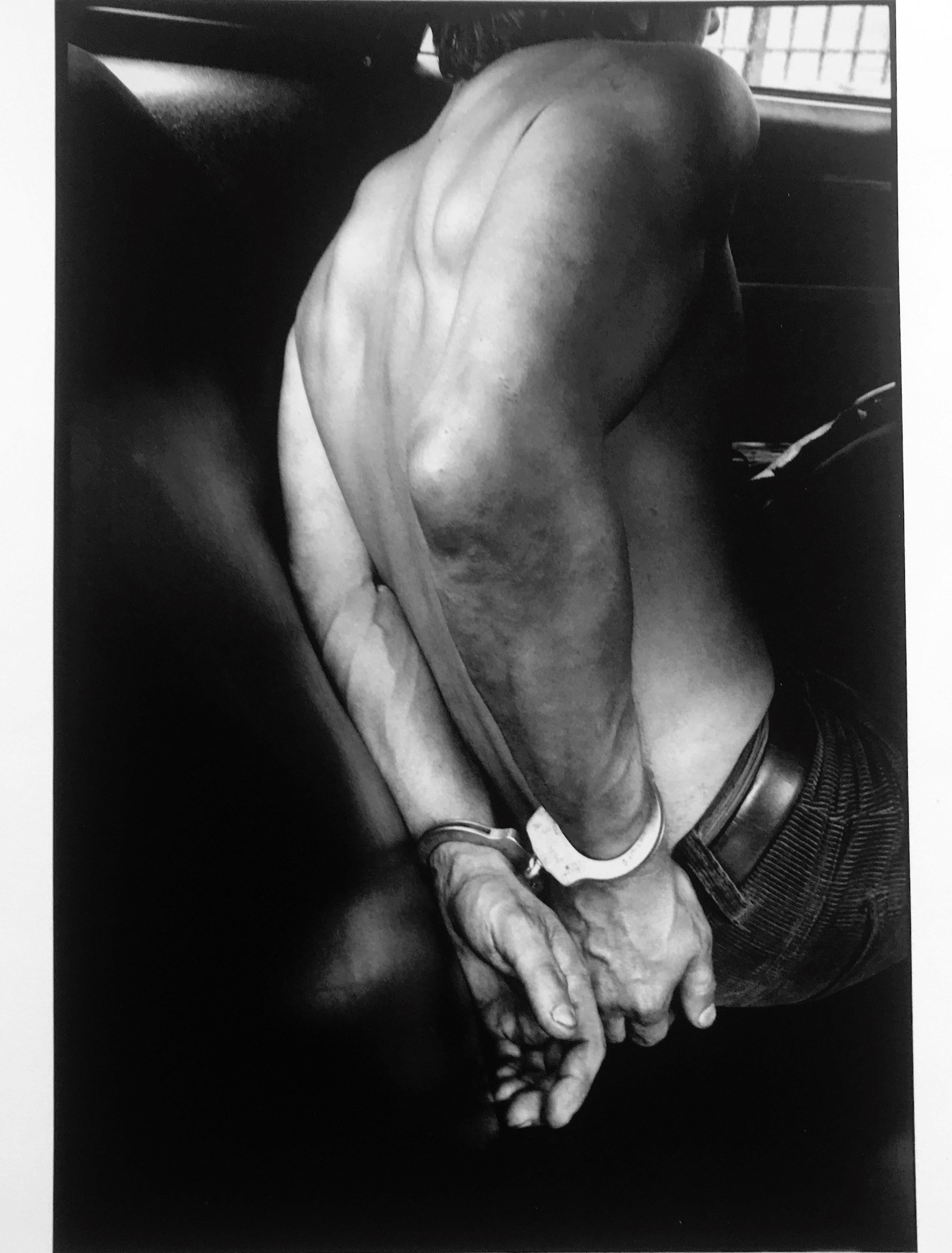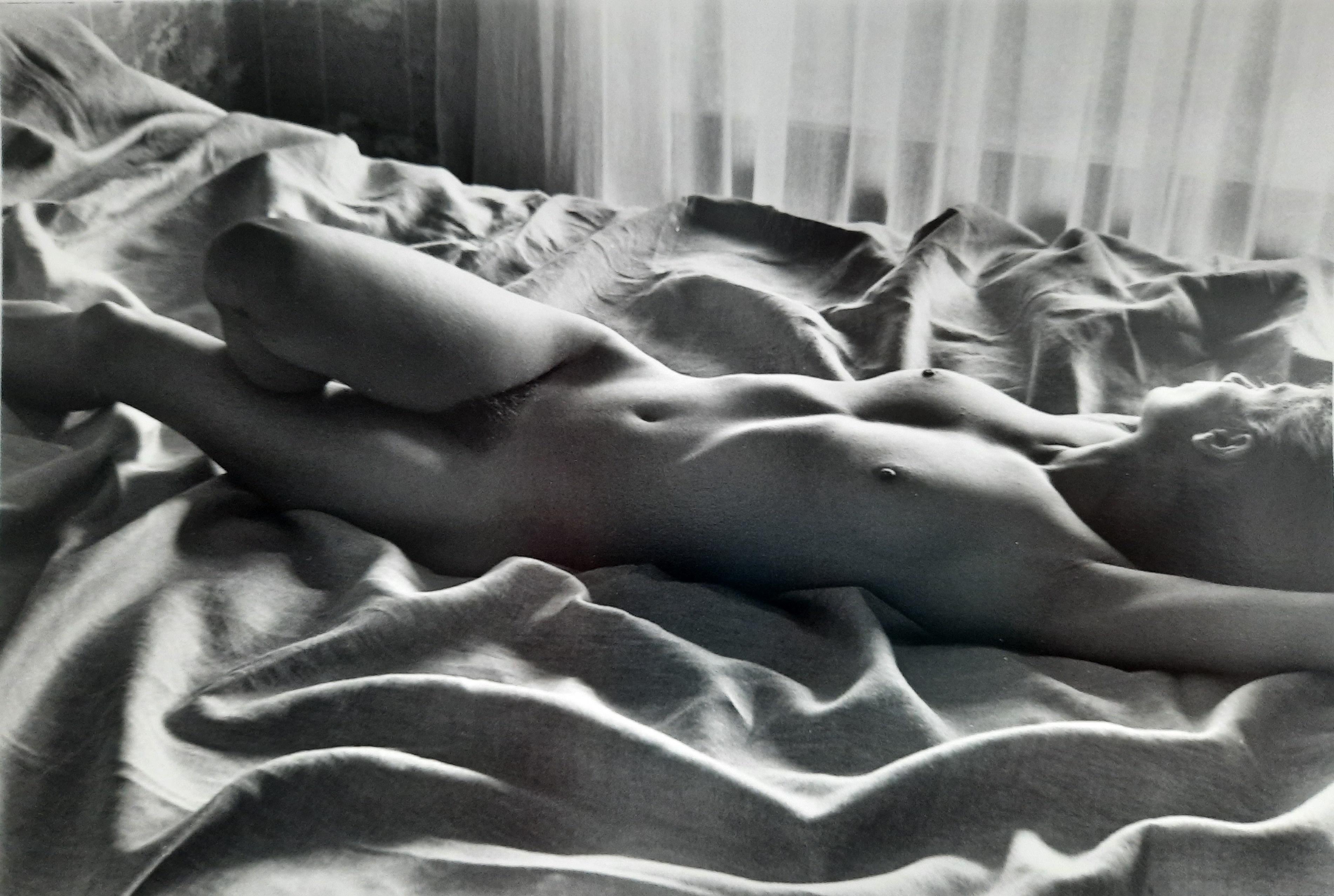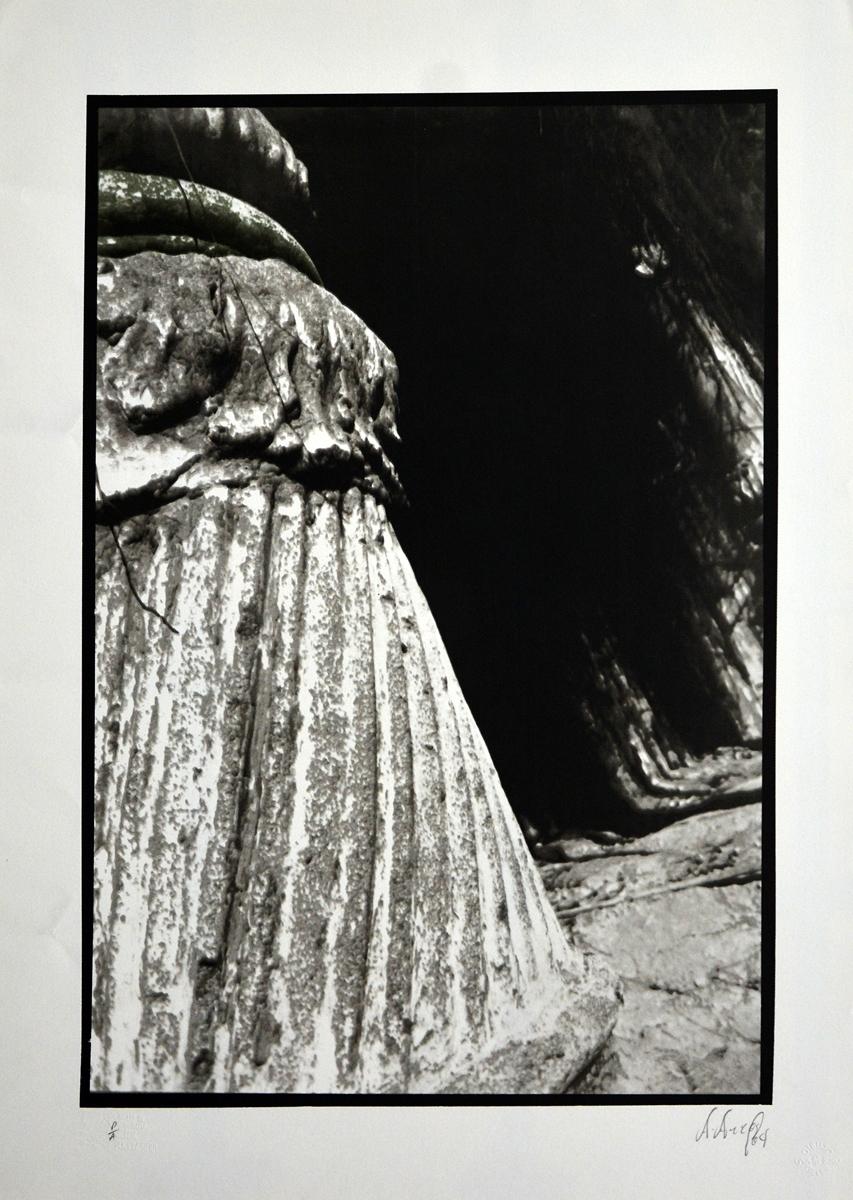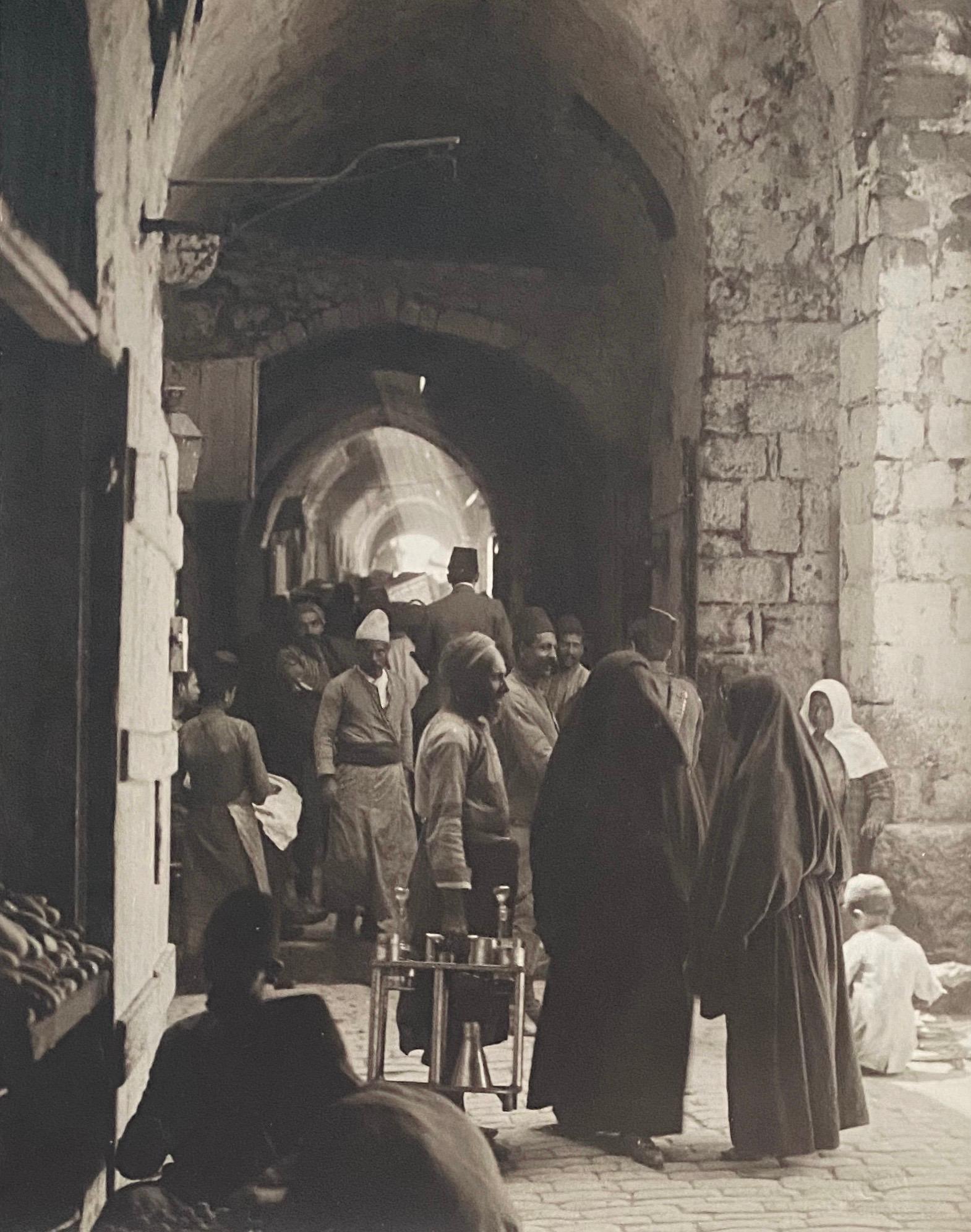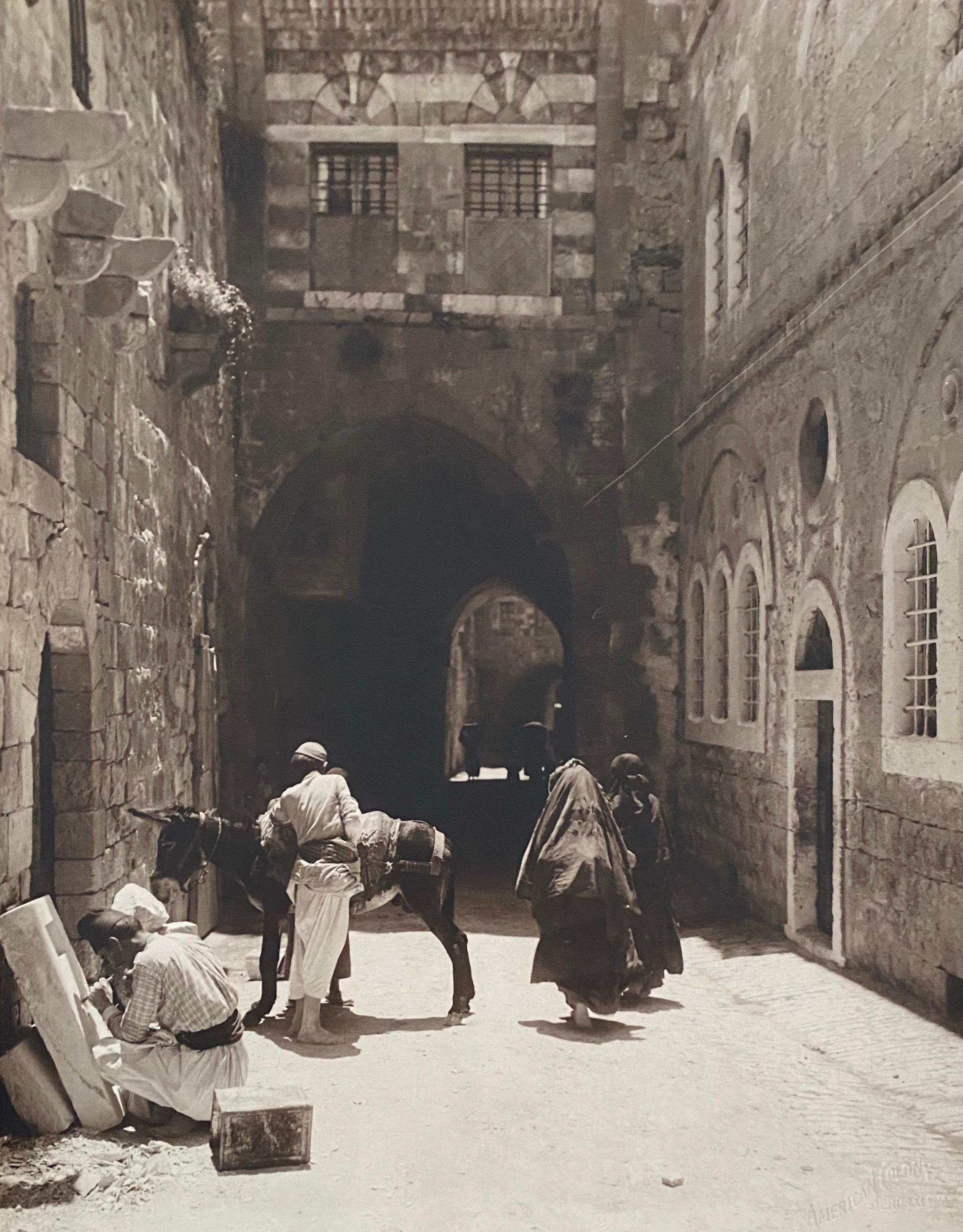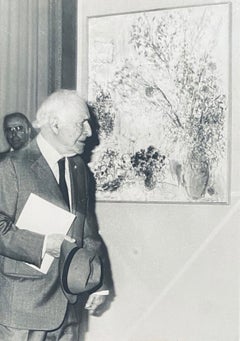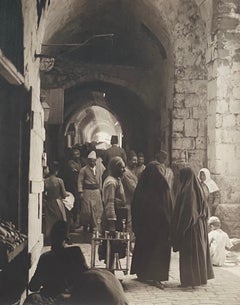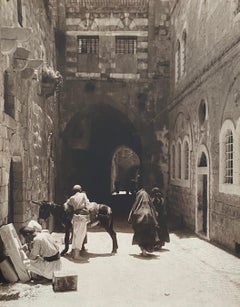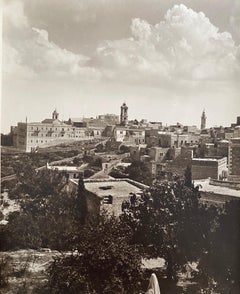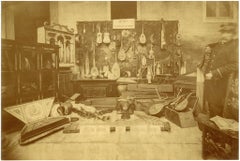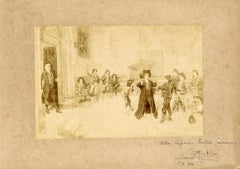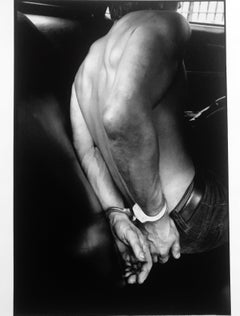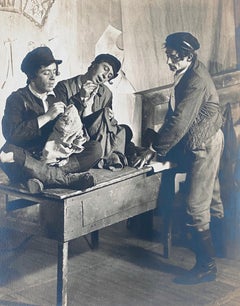
Artef Yiddish Theater Photograph
View Similar Items
Want more images or videos?
Request additional images or videos from the seller
1 of 13
Alfredo Valente Artef Yiddish Theater Photograph
About the Item
- Creator:Alfredo Valente
- Dimensions:Height: 18 in (45.72 cm)Width: 14 in (35.56 cm)
- Medium:
- Period:
- Condition:corners torn and some toning. Please see photos.
- Gallery Location:Surfside, FL
- Reference Number:1stDibs: LU3826761142
About the Seller
4.9
Platinum Seller
Premium sellers with a 4.7+ rating and 24-hour response times
Established in 1995
1stDibs seller since 2014
1,744 sales on 1stDibs
Typical response time: 2 hours
Authenticity Guarantee
In the unlikely event there’s an issue with an item’s authenticity, contact us within 1 year for a full refund. DetailsMoney-Back Guarantee
If your item is not as described, is damaged in transit, or does not arrive, contact us within 7 days for a full refund. Details24-Hour Cancellation
You have a 24-hour grace period in which to reconsider your purchase, with no questions asked.Vetted Professional Sellers
Our world-class sellers must adhere to strict standards for service and quality, maintaining the integrity of our listings.Price-Match Guarantee
If you find that a seller listed the same item for a lower price elsewhere, we’ll match it.Trusted Global Delivery
Our best-in-class carrier network provides specialized shipping options worldwide, including custom delivery.More From This Seller
View AllBlack And White Photograph Of Marc Chagall 1978
Located in Surfside, FL
Marc Chagall (born Moïche Zakharovitch Chagalov; 6 July [O.S. 24 June] 1887 – 28 March 1985) was a Russian-French artist of Belarusian Jewish origin. An early modernist, he was assoc...
Category
Late 20th Century Black and White Photography
Materials
Photographic Paper
Vintage Large Albumen Photo - Via Dolorosa In Station Of The Bross. Jerusalem
By American Colony Jerusalem
Located in Surfside, FL
The Original American Colony was a colony established in Jerusalem in 1881 by members of a utopian society led by Anna and Horatio Spafford. Now a hotel in East Jerusalem, it is still known by that name today.
After suffering a series tragic losses following the Great Chicago Fire of 1871 (see hymn "It is Well with My Soul"), Chicago residents Anna and Horatio Spafford led a small American contingent in 1881 to Jerusalem to form a utopian society. The "American Colony," as it became known, was later joined by Swedish Christians. The society engaged in philanthropic work amongst the people of Jerusalem regardless of religious affiliation, gaining the trust of the local Muslim, Jewish, and Christian communities.During and immediately after World War I, the American Colony carried out philanthropic work to alleviate the suffering of the local inhabitants, opening soup kitchens, hospitals, orphanages and other charitable ventures.
Towards the end of the 1950s, the society's communal residence was converted into the American Colony Hotel. The hotel is an integral part of the Jerusalem landscape where members of all communities in Jerusalem still meet. In 1992 representatives from the Palestine Liberation Organization and Israel met in the hotel where they began talks that led to the historic 1993 Oslo Peace Accord.
Panorama of Jerusalem, c. 1890-1920
The Colony moved to the large house of a wealthy Arab landowner, Rabbah Husseini, outside the city walls in Sheikh Jarrah on the road to Nablus. Part of the building was used as a hostel for visitors from Europe and America. A small farm developed with animals, a butchery, a dairy, a bakery, a carpenter's shop, and a smithy. The economy was supplemented by a shop selling photographs, craft items and archaeological artifacts. The American Colonists were embraced by the Jewish and Palestinian communities for their good works, among them, teaching in both Muslim and Jewish schools.
Photography
Around 1900, Elijah Meyers, a member of the American Colony, began taking photographs of places and events in and around the city of Jerusalem. Meyers's work eventually expanded into a full-fledged photographic division within the Colony, including Hol Lars (Lewis) Larsson and G. Eric Matson, who later renamed the effort as the Matson Photographic Service. Their interest in archeological artifacts (such as the Lion Tower in Tripoli pictured here), and the detail of their photographs, led to widespread interest in their work by archeologists. The collection was later donated to the Library of Congress.
World War I
When the Ottoman Empire entered World War I as an ally of Germany in November 1914, Jerusalem and Palestine became a battleground between the Allied and the Central powers...
Category
Late 19th Century Academic Black and White Photography
Materials
Photographic Paper
Vintage Large Albumen Photo Jerusalem - House Of The "Rich Man"
By American Colony Jerusalem
Located in Surfside, FL
The Original American Colony was a colony established in Jerusalem in 1881 by members of a utopian society led by Anna and Horatio Spafford. Now a hotel in East Jerusalem, it is still known by that name today.
After suffering a series tragic losses following the Great Chicago Fire of 1871 (see hymn "It is Well with My Soul"), Chicago residents Anna and Horatio Spafford led a small American contingent in 1881 to Jerusalem to form a utopian society. The "American Colony," as it became known, was later joined by Swedish Christians. The society engaged in philanthropic work amongst the people of Jerusalem regardless of religious affiliation, gaining the trust of the local Muslim, Jewish, and Christian communities.During and immediately after World War I, the American Colony carried out philanthropic work to alleviate the suffering of the local inhabitants, opening soup kitchens, hospitals, orphanages and other charitable ventures.
Towards the end of the 1950s, the society's communal residence was converted into the American Colony Hotel. The hotel is an integral part of the Jerusalem landscape where members of all communities in Jerusalem still meet. In 1992 representatives from the Palestine Liberation Organization and Israel met in the hotel where they began talks that led to the historic 1993 Oslo Peace Accord.
Panorama of Jerusalem, c. 1890-1920
The Colony moved to the large house of a wealthy Arab landowner, Rabbah Husseini, outside the city walls in Sheikh Jarrah on the road to Nablus. Part of the building was used as a hostel for visitors from Europe and America. A small farm developed with animals, a butchery, a dairy, a bakery, a carpenter's shop, and a smithy. The economy was supplemented by a shop selling photographs, craft items and archaeological artifacts. The American Colonists were embraced by the Jewish and Palestinian communities for their good works, among them, teaching in both Muslim and Jewish schools.
Photography
Around 1900, Elijah Meyers, a member of the American Colony, began taking photographs of places and events in and around the city of Jerusalem. Meyers's work eventually expanded into a full-fledged photographic division within the Colony, including Hol Lars (Lewis) Larsson and G. Eric Matson, who later renamed the effort as the Matson Photographic Service. Their interest in archeological artifacts (such as the Lion Tower in Tripoli pictured here), and the detail of their photographs, led to widespread interest in their work by archeologists. The collection was later donated to the Library of Congress.
World War I
When the Ottoman Empire entered World War I as an ally of Germany in November 1914, Jerusalem and Palestine became a battleground between the Allied and the Central powers...
Category
Late 19th Century Academic Black and White Photography
Materials
Photographic Paper
Vintage Large Albumen Photo Jerusalem Landscape
By American Colony Jerusalem
Located in Surfside, FL
The Original American Colony was a colony established in Jerusalem in 1881 by members of a utopian society led by Anna and Horatio Spafford. Now a hotel in East Jerusalem, it is still known by that name today.
After suffering a series tragic losses following the Great Chicago Fire of 1871 (see hymn "It is Well with My Soul"), Chicago residents Anna and Horatio Spafford led a small American contingent in 1881 to Jerusalem to form a utopian society. The "American Colony," as it became known, was later joined by Swedish Christians. The society engaged in philanthropic work amongst the people of Jerusalem regardless of religious affiliation, gaining the trust of the local Muslim, Jewish, and Christian communities.During and immediately after World War I, the American Colony carried out philanthropic work to alleviate the suffering of the local inhabitants, opening soup kitchens, hospitals, orphanages and other charitable ventures.
Towards the end of the 1950s, the society's communal residence was converted into the American Colony Hotel. The hotel is an integral part of the Jerusalem landscape where members of all communities in Jerusalem still meet. In 1992 representatives from the Palestine Liberation Organization and Israel met in the hotel where they began talks that led to the historic 1993 Oslo Peace Accord.
Panorama of Jerusalem, c. 1890-1920
The Colony moved to the large house of a wealthy Arab landowner, Rabbah Husseini, outside the city walls in Sheikh Jarrah on the road to Nablus. Part of the building was used as a hostel for visitors from Europe and America. A small farm developed with animals, a butchery, a dairy, a bakery, a carpenter's shop, and a smithy. The economy was supplemented by a shop selling photographs, craft items and archaeological artifacts. The American Colonists were embraced by the Jewish and Palestinian communities for their good works, among them, teaching in both Muslim and Jewish schools.
Photography
Around 1900, Elijah Meyers, a member of the American Colony, began taking photographs of places and events in and around the city of Jerusalem. Meyers's work eventually expanded into a full-fledged photographic division within the Colony, including Hol Lars (Lewis) Larsson and G. Eric Matson, who later renamed the effort as the Matson Photographic Service. Their interest in archeological artifacts (such as the Lion Tower in Tripoli pictured here), and the detail of their photographs, led to widespread interest in their work by archeologists. The collection was later donated to the Library of Congress.
World War I
When the Ottoman Empire entered World War I as an ally of Germany in November 1914, Jerusalem and Palestine became a battleground between the Allied and the Central powers...
Category
Late 19th Century Academic Black and White Photography
Materials
Photographic Paper
Artef Yiddish Theater Photograph
Located in Surfside, FL
Alfredo Valente (1899-1973) was an Italian born American photographer known for his prolific career chronicling Broadway theatre. He is also credited as a singer, painter, art collector, dealer, and cultural administrator.
Valente was born in Calabria, Italy where he trained as a fine artist and opera singer. In 1927, he immigrated to the United States where he performed opera in public. However, his singing career did not take off and he pivoted to focus on his photography.
In 1931, he became the photographer for the newly formed Group Theater, an experimental theater company based in New York co-founded by Lee Strasberg. By the mid-1930s, Valente was regularly published by magazines and newspapers, most notably Stage, a magazine dedicated to Broadway theater. Valente was lauded as one of the leading theater photographers of the day and his use of artistic camera angles and dramatic lighting became his signature. He also became known for portraying actors and dancers in costume, but not while performing. In addition to Broadway, Valente photographed American Ballet Theatre (then known as Ballet Theatre) during the company's formative years during the 1940s. He photographed some of Ballet Theatre's most prominent dancers, such as Harold Lang...
Category
Mid-20th Century Black and White Photography
Materials
Photographic Paper
Contemporary Chinese Large Scale Photograph B&W Print Photo "Some Days" Ed 3/10
Located in Surfside, FL
Wang Ningde (China, b. 1972) "Some days no. 23". Size: 48'' x 64.75'', 122 x 164 cm (image); 52'' x 69'', 132 x 175 cm (frame). Chromogenic print (c-print)...
Category
Mid-20th Century Black and White Photography
Materials
Photographic Paper
You May Also Like
The Arrigoni collection, Esposizione Musicale Milanese - Photographic - 1881
Located in Roma, IT
The Arrigoni collection, Esposizione Musicale Milanese, is a photographic albumen print applied on cardboard.
The print is made by coeval enlargement and applied on cardboard witho...
Category
1880s Modern Black and White Photography
Materials
Photographic Paper
"Porfirio Díaz in the exhile in Paris" - Vertical black and white print.
Located in Miami, FL
In 1911 Porfirio Díaz was exhiled to Paris from Mexico, this is a rare photograph shot in Paris as a Daguerrotype, later on an intenegative was done to...
Category
20th Century Contemporary Black and White Photography
Materials
Archival Paper, Photographic Paper, Black and White
Painting with Autograph - Vintage photo by Giuseppe Micali - Early 20th century
Located in Roma, IT
Painting with autograph by Giuseppe Micali is a vintage photographic albumen print applied on cardboard
Painter's signature and dedication to Tilde Ferrari (wife of painter Carlo Fe...
Category
Early 20th Century Modern Black and White Photography
Materials
Photographic Paper
New York City, Handcuffed, Police Work 1970s, Documentary Street Photography
By Leonard Freed
Located in New york, NY
Handcuffed, New York City, 1978 is a 14" x 11" black and white lifetime print by Leonard Freed. Signed verso (back of photo) by Leonard Freed, with Freed's copyright stamp also verso, the image appears in Leonard Freed's seminal book "Police Work," published in 1980.
For several years in the 1970s Leonard Freed worked alongside the New York police...
Category
1970s Contemporary Black and White Photography
Materials
Photographic Film, Photographic Paper, Silver Gelatin
Nude Paris Willy Ronis 20th Century French Humanist photography black and white
By Willy Ronis
Located in Paris, FR
Willy Ronis is one of the most famous members of the French Humanist photography.
Silver print on photographic paper
Hand-signed by the artist lower right
Stamp of the artist's stud...
Category
1990s Contemporary Black and White Photography
Materials
Photographic Paper, Silver Gelatin
PONT LEVOY a black and white photograph by JL Olezack
Located in New York, NY
The work is available as Silver gelatin print, by the artist, made in the darkroom, from the original 35 mm black and white negative and in a ...
Category
1980s Contemporary Black and White Photography
Materials
Photographic Paper, Black and White, Silver Gelatin
Recently Viewed
View AllMore Ways To Browse
Patriotic Costume
Mgm Costume
Alfredo Co
Alexander Calder Beastie
Alfons Mucha
Alphonse Mucha Pater
American Brilliant Cut Glass Plate
American Empire Library Table
Andre Derain 1972
Andre Gregory
Andy Marx
Ann Hamilton Print
Antique Iron Bed Side Tables
Antonio Luna
Aragon Castle
Art By Krull
Arthur Edwards
Audubon Amsterdam Edition
